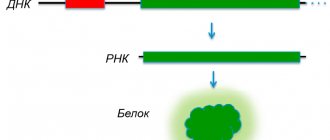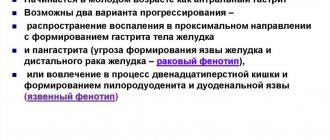Colonization of Helicobacter pylori on the surface and folds of the gastric mucosa significantly complicates antibacterial therapy. A successful treatment regimen is based on a combination of drugs that prevent the emergence of resistance and overtake the bacteria in different parts of the stomach. Therapy must ensure that even a small population of microorganisms does not remain viable.
Helicobacter pylori eradication therapy includes a complex of several drugs. A common mistake that often leads to unpredictable results is replacing even one well-studied drug from a standard regimen with another drug from the same group.
Proton pump inhibitors (PPIs)
PPI therapy has proven effective in various clinical studies. Although PPIs have a direct antibacterial effect on H. pylori in vitro, they do not play an important role in eradicating the infection.
The mechanism by which PPIs synergize when combined with antimicrobials to enhance the clinical efficacy of eradication therapy has not been fully established. It is assumed that antisecretory drugs of the PPI group may help increase the concentration of antimicrobial agents, in particular metronidazole and clarithromycin, in the gastric lumen. PPIs reduce the volume of gastric juice, as a result of which the leaching of antibiotics from the surface of the mucosa decreases, and the concentration, accordingly, increases. In addition, reducing the volume of hydrochloric acid maintains the stability of antimicrobials.
Treatment of Helicobacter pylori infection
IntroductionIn the early 1980s, Warren and Marshall isolated the bacterium from the stomach of a patient with chronic dyspepsia and antrum gastritis. Soon after one of the researchers ingested a culture of this cultured bacterium, he himself began to complain of dyspepsia and histologically proven antrum gastritis. Thus, one of Koch's postulates was fulfilled and a causal relationship between this infection and gastritis was shown. The isolated bacterium was taxonomically assigned to the species Campylobacter and was initially named C.pyloridis and later named Helicobacter pylori. By the way, in 1899 Pel, in his book “Diseases of the Stomach,” already pointed to gastric bacteria in connection with peptic ulcers. At that time, patients with ulcers were prescribed long-term bed rest and diet. To treat peptic ulcer disease, which occurred with complications, they resorted to surgical intervention. The introduction of H2 receptor blockers has radically changed the treatment of peptic ulcer disease. It remained unclear why the ulcers almost always recurred after stopping these medications. Only after the discovery of the connection between H. pylori infection and peptic ulcer disease did it become clear that this disease can only be completely cured if H. pylori infection is eliminated.
Prevalence of H. pylori infection
In the West, 30 - 50% of the adult population is infected with H. pylori. However, the prevalence of infection appears to be decreasing, on the one hand, due to radical drug treatment, and on the other, due to the phenomenon of age groups. This phenomenon is that there is a clearly increased prevalence of H. pylori infection in patients who are now 50 to 55 years of age, even when taking into account the gradual increase in infection prevalence as a consequence of greater exposure with age. People in this age group were born during the war and were exposed to the bacteria to a greater extent, probably due to poorer hygienic and socioeconomic conditions. The infection is believed to be transmitted from person to person through the oro-oral or fecal-oral route. Transmission occurs mainly during childhood. In developing countries, by the 10th year of life, 70% of the population is infected. H. pylori infection is therefore common and distributed throughout the world.
Pictures of diseases associated
with H. pylori infection
The spectrum of disease patterns associated with H. pylori infection is very wide.
Chronic active gastritis with mononuclear infiltrate is pathognomonic for this infection. The infection in 5 - 20% of cases manifests itself as a duodenal ulcer, for which it has now been established that there is a connection with H. pylori in 95 - 100% of cases, excluding those when the development of ulcers is associated with taking non-steroidal anti-inflammatory drugs (NSAIDs) or acetylsalicylic acid. A review of 30 studies shows that the average rate of recurrence (within 1 to 2 years) of duodenal ulcers is 63% in patients with persistent H. pylori infection, compared with only 3% after eradication of the infection. Recent evidence indicates that H. pylori infection plays a major role in the pathogenesis in at least 70 to 70% of cases of gastric ulcers. Gastric ulcers caused by carcinoma, taking NSAIDs and acetylsalicylic acid are excluded in such cases. It is also true for gastric ulcers that the risk of recurrence is reduced to approximately 2% after successful eradication of H. pylori, whereas the average recurrence rate for persistent infection is 51%. Based on these findings, a meeting of the National Institutes of Health in the United States agreed that it is absolutely necessary to treat H. pylori infection in the presence of peptic ulcer disease that is still active or that has been diagnosed in the past. It is currently unclear whether eradication of H. pylori makes sense in patients with chronic dyspepsia without a documented peptic ulcer. Recently, gastric carcinoma and lymphoma (so-called MALT lymphoma) have also been shown to be associated with H. pylori infection. Due to chronic inflammation caused by this bacterium, proliferation of cells in the gastric mucosa occurs. With prolonged infection, pronounced intestinal metaplasia and atrophy of the gastric mucosa gradually develop. Gradually, the condition of the gastric mucosa becomes such that the risk of developing carcinoma increases, similar to carcinoma in atrophic gastritis due to pernicious anemia. The role of H. pylori infection in poorly differentiated gastric lymphoma was further confirmed when Bayerdorffer et al. showed that these MALT lymphomas disappeared after successful eradication of H. pylori.
Diagnosis of H. pylori infection
The gold standard for detecting H. pylori infection is culture and histological examination of gastric biopsies. When prescribing proton pump inhibitors simultaneously, it is recommended to take biopsies from both the vestibule and the body of the stomach. An important additional advantage of this method is that an ulcer and/or other pathological abnormalities can be diagnosed at the same time. Thanks to this, adequate treatment is possible. In addition, an antibiogram can be obtained and a targeted choice of antibiotic can be made. More and more authors speak out in favor of serological diagnosis of infection with the subsequent selection of an eradication regimen that is highly effective when used in a certain group of patients; It is also necessary to take into account the resistance profile of the microorganism to antibiotics. Breath tests using 13C or 14C have good predictive power and pose limited patient burden and could be used as an alternative, but are not readily available everywhere. Monitoring after treatment, according to modern, well-established irradiation schemes, has become less necessary, but is still indicated for complicated peptic ulcer disease; in other cases, a breath test is probably sufficient for monitoring after treatment. Serological testing is of less value for monitoring after eradication treatment.
Elimination of H. pylori
Although H. pylori is sensitive in vitro to many antibiotics, in vivo eradication attempts often fail. H. pylori is found in and under the mucosa, and antibiotics do not reach the microorganism or their concentration is insufficient. In the acidic environment of the stomach, acid-sensitive antibiotics rapidly denature. Bioavailability is determined in part by the fact that some antibiotics have a local effect in the stomach, while others act systemically and are sometimes actively released into the gastric lumen after resorption. The choice of eradication regime is determined mainly by empirical findings also because there are too few suitable animal models. Many commonly prescribed treatment regimens are currently based on data from uncontrolled studies. The clinical effectiveness of eradication therapy should be at least 70% with no side effects and no development of bacterial resistance. None of the currently available antibiotics, when used as monotherapy, meets these criteria. Our discussion of different eradication regimens is based on a review of all articles, abstracts, and congress reports on the treatment of H. pylori during the period 1984–1995. Only the most commonly used combinations of antibiotics are analyzed, the effectiveness and safety of which have been assessed in many studies performed in different countries. The main advantages and disadvantages of these modes are discussed; The considerations outlined below can serve as a guide when choosing elimination therapy.
Triple therapy with bismuth preparations
Bismuth triple therapy is the first elimination therapy and has been successful in an average of 80% of patients. This treatment regimen includes colloidal bismuth oxide (120 mg 4 times a day), tetracycline (250 - 500 mg 4 times a day) and metronidazole (200 - 500 mg 3 times a day) for 1 - 2 weeks. The average clearance rate is 88% with a 1-week course and 89% with a 2-week course (based on studies with both metronidazole-resistant and metronidazole-sensitive H. pylori; see table). When replacing tetracycline with amoxicillin (1500 - 2000 mg/day), the effectiveness decreases to 78 and 83% after 1 and 2 weeks of treatment, respectively. 30 - 50% of patients experience some kind of side effects, but this leads to premature cessation of treatment in less than 5% of cases. Side effects are less pronounced if the dose of the components is reduced, the frequency of administration is increased and the total duration of treatment does not exceed 1 week. A significant drawback of this treatment regimen is a decrease in effectiveness in the presence of metronidazole-resistant H. pylori (on average from 89 to 38%). For large cities and many third world regions where metronidazole resistance is common, this is a major disadvantage.
Treatment with antiacidotic drugs and antibiotics
The protective effect of antiacidotic treatment against acid-sensitive antibiotics such as amoxicillin allows proton pump inhibitors or H2 blockers to be combined in elimination treatment regimens. An additional advantage of this combination is the rapid reduction of complaints from peptic ulcer disease. Dual therapy with proton pump inhibitors.
Very good results were initially reported with this simple regimen, comparable to those of bismuth triple therapy (clearance rate of about 80%), but with fewer side effects.
However, most researchers have failed to confirm these results, and the large differences in effectiveness levels remain unexplained. Omeprazole (20 - 40 mg 1 - 2 times a day) is used in combination with amoxicillin (1500 - 2000 mg per day) or clarithromycin (500 mg 2 - 3 times a day) for 2 weeks. The effectiveness of treatment when omeprazole was administered once a day averaged 55%. When taking omeprazole twice, the effectiveness changed insignificantly, averaging 62%. Some authors have reported clearly better results (92% elimination rate) using high doses of omeprazole (120 mg daily), but these results could not be replicated. Important advantages of this treatment regimen are its simplicity and a limited number of adverse reactions, of which the most difficult to tolerate is the occurrence of a rash in response to amoxicillin (in 4 - 10% of patients). If you are allergic to penicillin, amoxicillin can be replaced with clarithromycin. After treatment with clarithromycin (1000 - 1500 mg per day) and omeprazole (20 - 40 mg once a day), the elimination rate averaged 67%, and when using omeprazole 2 times a day - 75% (see table). Disadvantages of this treatment include the development of clarithromycin resistance in approximately 64% of unsuccessfully treated patients and low efficacy (17%) in cases of primary clarithromycin resistance. Triple therapy with H2 receptor .
Several studies have been conducted on triple therapy using H2 receptor blockers.
Of these, the most famous is the study by Hentschel et al., in which, after treatment with ranitidine (300 mg 1 time per day), amoxicillin (2250 mg per day) and metronidazole (1500 mg per day) for 14 days, the elimination rate of H. pylori was 89%. These results could not be confirmed by other researchers. Triple therapy with proton pump inhibitors.
Because the average success rates of the above dual therapy were unsatisfactory, a second antibiotic was added to the proton pump inhibitors.
The effectiveness of the regimen, including omeprazole (20 mg 1 - 2 times a day), amoxicillin (750 - 1500 mg 2 times a day) and metronidazole (250 - 500 mg 2 times a day), during a 2-week course of treatment averaged 79 %. Bazzoli et al. were the first to report encouraging results with a relatively simple regimen of omeprazole (20 mg twice daily), clarithromycin (250 mg twice daily) and tinidazole (200 mg twice daily) for 1 week. Variations of this regimen, in which tinidazole could be replaced by metronidazole, often involved the use of a double dose of antibiotics. Efficacy averages 89% (see table), but decreases to approximately 77% for metronidazole-resistant H. pylori. The combination of omeprazole (20 mg 1 - 2 times a day), clarithromycin (250 - 500 mg 2 times a day) and amoxicillin (1000 mg 2 times a day) for 1 week is another promising treatment regimen, in which the elimination rate is average 88%. This combination can be used in cases of metronidazole resistance. However, effectiveness decreases to 50% if clarithromycin is resistant and to 28% if the H. pylori strain is not sensitive to both metronidazole and clarithromycin. Triple therapy with proton pump inhibitors is generally quite simple and effective and represents a good alternative to bismuth triple therapy. There is currently insufficient data on adverse reactions and the adverse effects of antibiotic resistance. Four-drug therapy.
Adding omeprazole to classic bismuth triple therapy provides the most effective eradication of H. pylori. The treatment regimen is as follows: omeprazole (20 mg 2 times a day), bismuth oxide (120 mg 4 times a day), tetracycline (500 mg 4 times a day) and metronidazole (500 mg 3 times a day) for 1 - 2 weeks. Efficacy averages 96% in groups of patients whose sensitivity to metronidazole was not tested before treatment (see table). The frequency of adverse reactions (63%) is slightly reduced if the course of treatment takes 1 week rather than two, with the same effectiveness. Early studies show that this treatment regimen remains effective despite metronidazole resistance.
Conclusion
Currently, treatment aimed at eradicating H. pylori is only indicated for patients with peptic ulcer disease associated with H. pylori infection. To date, there has been no evidence that eradication of H. pylori reduces complaints in functional dyspepsia. In the future, it will become clear whether treatment aimed at eradicating H. pylori should be used to prevent gastric carcinoma and MALT lymphoma.
Ideal anti-Helicobacter therapy is simple, cheap and effective in at least 70% of treated patients, with no significant adverse reactions or development of resistance. It is not advisable to use dual therapy using proton pump inhibitors due to its low effectiveness.
If the primary nature of H. pylori resistance is known, targeted antibacterial treatment can be carried out. In the absence of an antibiogram, one can focus on the incidence of resistance to metronidazole and clarithromycin in the population of a given region. In regions where the incidence of metronidazole resistance is below 20%, choices can be made between bismuth triple therapy, proton pump inhibitor triple therapy, and quadruple drug therapy. If the rate of resistance to metronidazole exceeds 20%, then choose between triple therapy with proton pump inhibitors without metronidazole and quadruple therapy. In areas with high clarithromycin resistance, triple therapy with bismuth, triple therapy with proton pump inhibitors without clarithromycin, or quadruple therapy may be prescribed. When resistance to both clarithromycin and metronidazole is high, a four-drug regimen should be the treatment of choice.
Adapted from Ned Tijdschr Geneeskd 1996;140(18):967-70 with permission from the editors and authors.
Literature:
1. Warren JR, Marshall BJ. Unidentified curved bacilli on gastric epithelium in active chronic gastritis [letter]. Lancet 1983;1:1273-5.
2. Marshall BJ, Armstrong JA, McGechie DB, Clancy RJ. Attempt to fulfil Koch's postulates for pyloric Campylobacter. Med J Aust 1985;142:436-9.
3. Varshall BJ. Helicobacter pylori. Am J Gastroenterol 1994;89 Suppl: II 6-28.
4. Kuipers EJ, PeCa AS, Kamp G van, Uyterlind AV, Pals NFM, Kurz-Pohlman E, et al. Seroconversion for Helicobacter pylori. Lancet 1993;342:328-31.
5. Webb PM, Knight T, Greaves S, Wilson A, Newell DG, Elder J, et al. Relation between infection with Helicobacter pylori and living conditions in childhood: evidence for person transmission in early life. BMJ 1994;308:750-3.
6. Pounder RE, N g D. The prevalence of Helicobacter pylori infection in different countries. Aliment Pharmacol Ther 1995;Suppl:33-9.
7. Rauws EAJ, Langenberg W, Houthoff HJ, Zanen HC, Tytgat GNJ. Campylobacter pyloridis-associated chronic antral gastritis. A prospective study of its prevalence and the effects of antibacterial and antiulcer treatment. Gastroenterol 1988;94:33-40.
8. Hulst RWM van der, Tytgat GNJ, Helicobacter pylori and peptic ulcer disease. Scand J Gastroenterol.
9. NIH Consensus Conference. Helicobacter pylori in peptic ulcer disease. JAMA 1994;272:65-9.
10. Tally NJ. A critique of therapeutic trials in Helicobacter pylori-positive functional dyspepsia. Gastroenterology 1994;106:1174-83.
11. Parsonnet J, Friedman GD, Vandersteen DP, Chang Y, Vogelman JH, Orentreich N, et al. Helicobacter pylori infection and the risk of gastric carcinoma. N Engl J Med 1991;325:1127-31.
12. Parsonnet J, Hansen S, Rodriguez L, Gelb AB, Warnke RA, Jellum E, et al. Heliobacter pylori infection and gastric lymphoma. N Engl J Med 1994;330:1267-71.
13. Kuipers EJ, Uyterlinde AM, PeCa AS, Roosendaal R. Pals G. Nelis GF, et al. Long-term sequelae of Helicobacter pylori gastritis. Lancet 1995;345:1525-28.
14. Bayerdorffer E, Neubauer A, Rudolph B, Thiede C, Lehn N, Eidt S, et al. Regression of primary gastric lymphoma of mucosa-associated lymphoid tissue type after cure of Helicobacter pylori infection. Lancet 1995;345:1591-4.
15. Chiba N, Rao BV, Rademaker JW, Hunt RH. Meta-analysis of the efficacy of antibiotic therapy in eradicating Helicobacter pylori. Am J Gastroenterol 1992;87:1716-27.
16. Hulst RWM van der, Keller JJ, Rauws EAJ, Tytgat GNJ. Treatment of Helicobacter pylori infection. Review of the world literature. Helicobacter 1996;1:6-19.
17. Borody TJ, Brandl S, Andrews P, Ferch N, Jankiewicz E, Hyland L. Use of high efficacy, lower dose triple therapy to reduce side effects of eradicating Helicobacter pylori. Am J Gastroenterol 1994;89:33-8.
18. Noach LA, Langenberg WL, Bertola MA, Dankert J, Tytgat GNJ. Impact of metronidazole resistance on the eradication of Helicobacter pylori. Scand J Infect Dis 1994;26:321-7.
19. Axon ATR. The role of acid inhibition in the treatment of Helicobacter pylori infection. Scand J Gastroenterol 1994;29 Suppl 201;16-23.
20. Labenz J, Gyenes E, Ruhl GH, Borsch G. Amoxicillin plus omeprazole versus triple therapy for eradication of Helicobacter pylori in duodenal ulcer disease: a prospective, randomized, and controlled study. Gut 1993;34:1167-70.
21. Bayerdorffer E, Miehlke S, Mannes GA, Sommer A, Hochter W, Weingart J, et al. Double-blind trial of omeprazole and amoxicillin to cure Helicobacter pylori infection in patients with duodenal ulcers. Gastroenterology 1995;108:1412-7.
22. Hulst RWM van der, Weel JFL, Verheul SB, Keller JJ, Kate FJW ten, Ende AE van der, et al. Treatment of Helicobacter pylori infection with low or high dose omeprazole combined with amoxicillin and the effect of early retreatment: a prospective randomized double-blind study. Aliment Ther Pharmacol 1996;10:165-71.
23. Cayla R, Zerbib F, Megraud F, Lamouliatte H. Clarithromycin resistance of Helicobacter pylori strains before and after treatment: a key factor of treatment failures [abstract]. Gastroenterol 1995;108:68.
24. Hentschel E, BrandstKtter G, Dragosics B, Hirschl AM, Nemec H, Schutze K, et al. Effect of ranitidine and amoxicillin plus metronidazole on the eradication of Helicobacter pylori and the recurrence of duodenal ulcer. N Engl J Med 1993;328:308-12.
25. Bazzoli F, Zagari RM, Fossi S, Pozzato P, Alampi G, Simoni P, et al. Short term low-dose triple therapy for the eradication of Helicobacter pylori. Eur J Gastroenterol Hepatol 1994;6:773-7.
26. Moayyedi P, Sahay P, Tompkins DS, A[on ATR. Efficacy and optimum dose of omeprazole in a new 1-week triple therapy regimen to eradicate Helicobacter pylori. Eur J Gastroenterol Hepatol 1995;7:835-40.
27. Boer W de, Driessen W, Jansz A, Tytgat G. Effect of acid suppression on the efficacy of treatment for Helicobacter pylori infection. Lancet 1995;345:817-20.
Bismuth preparations
Bismuth was one of the first drugs to eradicate H. pylori. There is evidence that bismuth has a direct bactericidal effect, although its minimum inhibitory concentration (MIC - the smallest amount of drug that inhibits the growth of a pathogen) against H. pylori is too high. Like other heavy metals such as zinc and nickel, bismuth compounds reduce the activity of the enzyme urease, which is involved in the life cycle of H. pylori. In addition, bismuth preparations have local antimicrobial activity, acting directly on the bacterial cell wall and disrupting its integrity.
Come to us again!
At the stage of prescribing a treatment regimen, communication between the patient and the doctor usually ends. Especially if the unpleasant symptoms have disappeared. The patient saves time and money - after all, “nothing hurts.” This is the wrong tactic.
After completing the course, you need to see if it is effective. This is not done in 90% of cases. 2 weeks after completing therapy, you must test your stool for Helicobacter pylori antigen. Negative - everything is fine! If the result is positive, then at any, even minimal concentration, one must admit that the therapy was ineffective and select a new one.
The incurability of Helicobacter pylori is a medical myth. Due to the fact that patients do not take a control test and then, for example, return a year later with the same complaints and are again diagnosed with Helicobacter pylori, it is impossible to understand whether this is a re-infection or ineffective therapy. Helicobacter pylori is an infection, a microorganism. No microorganism – no problem.
At the same time, one should not miss the presence of resistance, due to which the first line of therapy may be unsuccessful. There is a problem with resistance, and in this case, correct diagnosis and a mandatory follow-up visit after treatment are very important.
Metronidazole
H. pylori is generally very sensitive to metronidazole, the effectiveness of which is independent of pH. After oral or infusion use, high concentrations of the drug are achieved in the gastric juice, which makes it possible to achieve the maximum therapeutic effect. Metronidazole is a prodrug that undergoes activation by bacterial nitroreductase during metabolism. Metronidazole causes H. pylori to lose its helical DNA structure, causing DNA damage and killing the bacterium.
NB!
The result of treatment is considered positive if the results of the test for H. pylori, carried out no earlier than 4 weeks after the course of treatment, are negative. Performing the test before 4 weeks after eradication therapy significantly increases the risk of false negative results. It is preferable to stop taking PPIs two weeks before diagnosis. Helicobacter pylori eradication therapy: scheme
For what reasons does bacteria appear in the body?
Helicobacter is a bacterium
The bacterium does not develop in the open air, but passes from an infected person to a healthy person through household items, for example, plates, cups, spoons, etc., personal hygiene items, and also, importantly, the bacterium can be transmitted during a kiss.
The bacterium survives well in an acidic environment, so it easily enters the stomach and its mucous membrane, beginning to destroy all healthy tissue.
As a result of infection with this bacterium, a person may experience erosions, gastritis and all end with an ulcer, and if the disease is not detected early and treatment is not started, stomach cancer may develop.
People who do not take care of personal hygiene, lead a dirty lifestyle, etc. are susceptible to infection. Also at risk are those who live in dormitories, boarding schools, orphanages, and medical workers.
Next, you will learn about the symptoms of this disease, how helicobacteriosis is diagnosed and treated.
Clarithromycin
Clarithromycin, a 14-member macrolide, is a derivative of erythromycin with a similar spectrum of activity and indications for use. However, unlike erythromycin, it is more acid resistant and has a longer half-life. The results of studies showing that the triple eradication therapy regimen for Helicobacter pylori using clarithromycin gives a positive result in 90% of cases, led to the widespread use of the antibiotic.
In this regard, an increase in the prevalence of clarithromycin-resistant strains of H. pylori has been recorded in recent years. There is no evidence that increasing the dose of clarithromycin will overcome the problem of antibiotic resistance to the drug.
Blood test for immunoglobulins G and M (IgG and IgM)
If the blood test for IgG to Helicobacter pylori is positive, then this indicates that the infection was either once present in the person’s body (i.e., the person was treated for Helicobacter earlier, after which antibodies remained in the blood), or the person has it carrier, that is, infected with Helicobacter pylori. A positive IgG result may also occur at the time of treatment. But this result can be either false positive or false negative. If the patient took proton pump inhibitors or bismuth preparations less than 2 weeks before the test, the IgG result may be unreliable. The accuracy of this study ranges from 75% to 86%.
Indications for eradication therapy
According to the Maastricht 2-2000 Consensus Report, H. pylori eradication is strongly recommended:
- all patients with peptic ulcer disease;
- patients with poorly differentiated MALT lymphoma;
- persons with atrophic gastritis;
- after resection for gastric cancer;
- first-degree relatives of patients with stomach cancer.
The need for eradication therapy in patients with functional dyspepsia, GERD, as well as in persons taking non-steroidal anti-inflammatory drugs for a long time remains a subject of debate. There is no evidence that eradication of H. pylori in such patients affects the course of the disease. However, it is well known that individuals with H. pylori who have nonulcer dyspepsia and corpus-predominant gastritis are at increased risk of developing gastric adenocarcinoma. Thus, H. pylori eradication should also be recommended for patients with nonulcer dyspepsia, especially if histology reveals corpus-predominant gastritis.
The argument against anti-Helicobacter therapy in patients taking NSAIDs is that the body protects the gastric mucosa from the damaging effects of drugs by increasing cyclooxygenase activity and prostaglandin synthesis, while PPIs reduce natural defenses. However, eradication of H. pylori before prescribing NSAIDs significantly reduces the risk of peptic ulcer disease during subsequent treatment (a study by American scientists led by Francis K. Chan, published in The Lancet in 1997).
How is Helicobacteriosis diagnosed?
To make a final diagnosis of helicobacteriosis, doctors prescribe the following studies of the patient’s body:
- Non-invasive tests;
- Blood tests;
- Exhaled air analysis.
- Biopsy. This analysis is done during endoscopy of the affected areas of the mucosa. Thanks to this procedure, doctors obtain information about the presence (absence) of bacteria in the patient’s mucosa. This procedure is accurate if tissue samples were taken from several inflamed areas at once.
These studies are inexpensive and quick to obtain results. But it should be noted that non-invasive tests often show false positive results.
And in order for the result of the analysis of exhaled air to be as truthful as possible, 14 days before the test you should not take antisecretory, anti-inflammatory and antacid drugs, also 3 days before the procedure you should not drink alcohol or eat legumes, and 3 hours before you should not smoke or chew chewing gum.
Eradication therapy
Despite the use of combination treatment regimens, 10–20% of patients infected with H. pylori fail to achieve elimination of the pathogen. The best strategy is to select the most effective treatment regimen, but the possibility of using two or even more sequential regimens should not be ruled out if the treatment of choice is insufficiently effective.
If the first attempt at eradication of H. pylori fails, it is recommended to immediately proceed to second-line therapy. Antibiotic sensitivity testing and switching to salvage therapy regimens are indicated only for those patients in whom second-line therapy will also not lead to eradication of the pathogen.
One of the most effective “rescue regimens” is a combination of PPI, rifabutin and amoxicillin (or levofloxacin 500 mg) for 7 days. An Italian study led by Fabrizio Perri and published in Alimentary Pharmacology & Therapeutics in 2000 confirmed that the rifabutin regimen was effective against strains of H. pylori resistant to clarithromycin or metronidazole. However, the high price of rifabutin limits its widespread use.
NB! To avoid the development of resistance to both metronidazole and clarithromycin, these drugs are never combined in the same regimen. The effectiveness of such a combination is very high, but patients who do not respond to therapy usually develop resistance to both drugs at once (a study by German scientists led by Ulrich Peitz, published in Alimentary Pharmacology & Therapeutics in 2002). And further selection of therapy causes serious difficulties.
Research data confirm that a 10-day salvage therapy regimen, including rabeprazole, amoxicillin and levofloxacin, is much more effective than standard second-line eradication therapy (a study by Italian scientists led by Enrico C Nista, published in Alimentary Pharmacology & Therapeutics in 2003 year).
I have been diagnosed with Helicobacter pylori – what should I do?
If a positive test for Helicobacter pylori is detected, you should consult a gastroenterologist or therapist. Antibiotics are used to treat infection, and only a doctor prescribes them.
Is it possible to cure Helicobacter by taking the drug de-nol, as shown in advertising, or with folk remedies? You can completely get rid of Helicobacter pylori infection only with certain antibiotics.
Do I need to treat myself with antibiotics if nothing bothers me and the test result for Helicobacter is positive? The infection may not bother you, in 70% of cases this happens, gastritis proceeds “silently” for years, but after a few years, due to low-grade inflammation, atrophy of the mucous membrane occurs and its transition to stomach cancer cannot be ruled out. In each specific case, the decision to carry out treatment is made by the attending physician.
Helicobacter pylori infection is very common among the population, is there any point in treatment if you can become infected again later? Yes, re-infection is possible, but it does not happen often - approximately 6 people out of 100 treated people acquire the infection again if the rules of prevention are not followed. They are very simple - wash your hands before eating, don’t try other people’s food, don’t eat in dubious eateries where you can’t be sure of the correct handling of the dishes, don’t kiss people you’re not very close to. It is also important, when a Helicobacter pylori infection is detected, to test all family members for it, starting from adolescence, and ideally, to treat all infected people at the same time. Children, if nothing bothers them, are treated from adolescence - from 12-13 years. If a child complains of abdominal pain or nausea, then examination and treatment are carried out according to indications at an earlier age.
People very often complain about exacerbation of gastritis. But in many cases it can be cured by getting rid of the bacteria that caused the inflammation of the stomach. If the infection is left unattended, over time, gastritis will turn into atrophic. Then the patient will need to take a biopsy at least once a year in 5-7 places of the stomach in order not to miss cancer.
Trial and error
For many years, the origin of peptic ulcer disease was interpreted incorrectly. False theories became a strong basis for erroneous treatment that did not bring the expected results. At the beginning of the 20th century, doctors were inclined to believe that a person pays for nervous shock with a stomach ulcer. The basis of therapy was a diet excluding everything fried, hot and spicy, and, of course, sedatives. It is not surprising that against the background of such treatment, recovery was a very doubtful outcome.
A little later, the unfortunate hydrochloric acid begins to be blamed for the occurrence of peptic ulcers. She and only she is declared the root cause of the disease. Appropriate adjustments are made to the usual treatment regimen: antacids become the basis of antiulcer therapy. These drugs undoubtedly alleviated the course of the peptic ulcer, but they could not guarantee a complete cure. Temporary remission that occurred after a course of eradication therapy with antacids, as a rule, ended in relapse. And only in the early 80s did the long-awaited truth, suffered by millions of patients, dawn.







